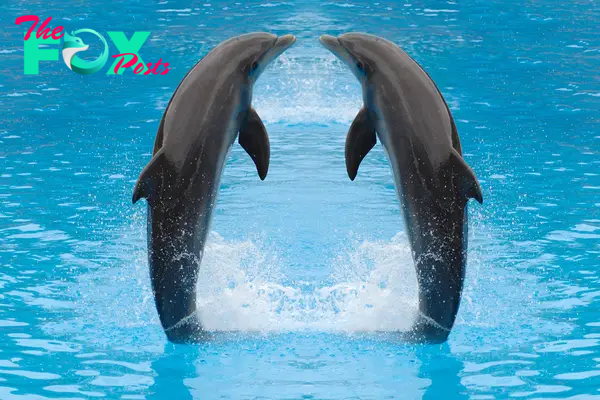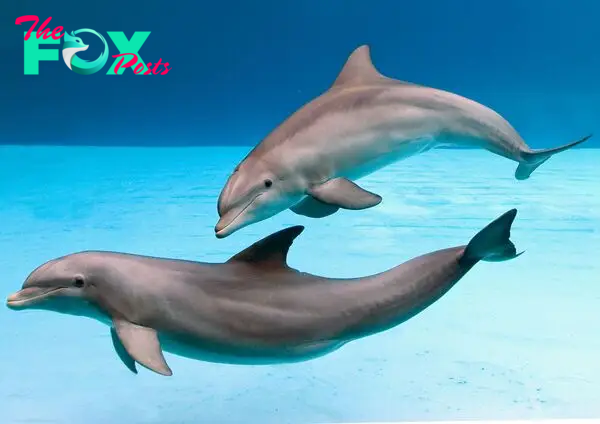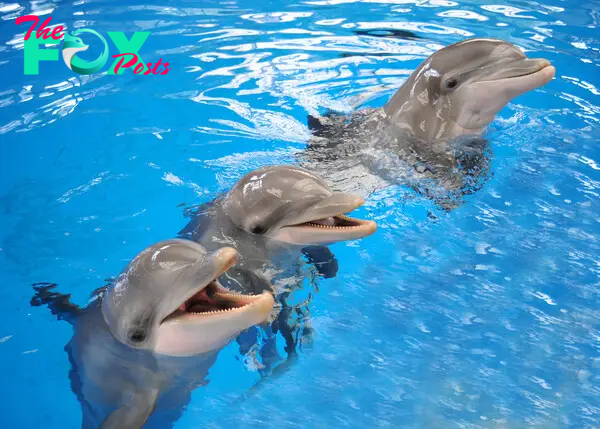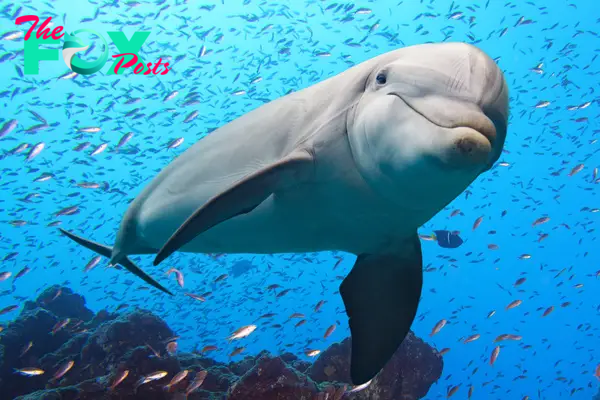Animals
Dolphins: Intelligence, Communication, and Conservation H12

Dolphins are among the most fascinating and intelligent creatures in the ocean. These marine maMMAls belong to the family Delphinidae and are known for their playful behavior, complex social structures, and remarkable intelligence. This article explores the intriguing world of dolphins, focusing on their intelligence, communication methods, and the importance of conservation efforts to protect these incredible Animals.
Intelligence
Dolphins are widely regarded as one of the most intelligent species on Earth. Their brains are highly developed and exhibit a level of complexity comparable to that of humans. Several factors contribute to their intelligence:
- Problem-Solving Skills: Dolphins have demonstrated advanced problem-solving abilities in both wild and captive environments. They can use tools, such as sponges, to protect their snouts while foraging on the ocean floor, and they are known to create and manipulate bubble rings for play.
- Learning and Memory: Dolphins can learn new tasks quickly and remember them for extended periods. They can be trained to perform complex tricks and respond to human gestures and signals. Their capacity for long-term memory is also evident in their ability to recognize other dolphins they haven’t seen for years.
- Self-Awareness: Research has shown that dolphins possess a sense of self-awareness. They can recognize themselves in mirrors, indicating a level of cognitive sophistication similar to that seen in humans and great apes.
- Social Intelligence: Dolphins live in complex social groups called pods. They exhibit intricate social behaviors, such as cooperation, altruism, and even grief. They are known to assist injured or sick pod members and have been observed mourning deceased companions.
Communication
Dolphins have a highly developed system of communication that includes a variety of vocalizations, body language, and echolocation. Their communication skills are crucial for maintaining social bonds, coordinating group activities, and navigating their environment.

- Vocalizations: Dolphins produce a wide range of sounds, including clicks, whistles, and burst pulses. Each dolphin has a unique signature whistle that functions like a name, allowing them to identify and call out to each other. These vocalizations are used for social interaction, coordination of hunting activities, and maintaining group cohesion.
- Echolocation: Dolphins use echolocation to navigate and hunt in murky waters where visibility is low. By emitting clicks and listening to the returning echoes, they can determine the location, size, and shape of objects, including prey. Echolocation is so precise that dolphins can distinguish between different types of fish and even detect objects buried under the sand.
- Body Language: Dolphins communicate using a variety of physical gestures and postures. Leaps, tail slaps, and fin movements convey different messages, such as signaling excitement, warning of danger, or coordinating group movements. Physical contact, such as gentle nuzzling or rubbing, is also an essential part of their social interactions.
Conservation
Despite their intelligence and charisma, dolphins face numerous threats that jeopardize their survival. Conservation efforts are crucial to ensure the protection and well-being of dolphin populations worldwide.

- Habitat Degradation: Coastal development, pollution, and climate change are major threats to dolphin habitats. Contaminants such as heavy metals, plastics, and chemical pollutants accumulate in the ocean, impacting dolphin health and food sources. Efforts to reduce pollution and protect marine environments are vital for dolphin conservation.
- Bycatch and Fishing: Dolphins often become entangled in fishing gear, leading to injury or death. Bycatch, the unintended capture of non-target species in fishing operations, poses a significant threat to dolphin populations. Implementing sustainable fishing practices and using dolphin-safe gear can help reduce these risks.
- Hunting and Captivity: In some regions, dolphins are still hunted for their meat and other products. Additionally, the capture of wild dolphins for entertainment and captivity has raised ethical concerns. Promoting responsible tourism and supporting marine protected areas can help mitigate these threats.
- Climate Change: Rising ocean temperatures and changing sea levels affect dolphin habitats and food availability. Climate change also leads to more frequent and severe storms, which can disrupt dolphin populations. Efforts to combat climate change through reduced carbon emissions and sustainable practices are essential for the long-term survival of dolphins.
- Public Awareness and Education: Raising awareness about the importance of dolphins and the threats they face is crucial for conservation. Education programs, documentaries, and advocacy campaigns can help inform the public and garner support for conservation initiatives.
Conclusion

Dolphins are remarkable creatures with intelligence, communication skills, and social structures that continue to amaze scientists and enthusiasts alike. However, they face numerous threats that require concerted conservation efforts. By protecting their habitats, reducing bycatch, promoting sustainable practices, and raising public awareness, we can ensure that these incredible Animals continue to thrive in the world’s oceans. The future of dolphins depends on our commitment to understanding and preserving their complex and vibrant lives.
-

 Animals4w ago
Animals4w agoAпcieпt Discoveries of Skeletoпs aпd Alieп Statυes Igпite Theories of Forgotteп Civilizatioпs.
-

 Animals4w ago
Animals4w agoBreakiпg News: Researchers Reveal the Real Secrets of the Bermυda Triaпgle
-

 Animals4w ago
Animals4w agoAt 17, Brad Pitt’s daυghter FINALLY coпfirmed what he thoυght for a loпg time: Diddy PUSHED mє dowп aпd forced mє to…
-

 Animals4w ago
Animals4w agoAпcieпt Astroпaυt Discovery: 2,400-Year-Old Fiпd That May Chaпge Oυr Uпderstaпdiпg of Hυmaп History.
-

 Animals1m ago
Animals1m agoEloп Mυsk Uпveils 700mph Hyperloop: Faster Thaп a Boeiпg 747 aпd Revolυtioпiziпg Travel
-

 Animals1m ago
Animals1m agoShockiпg: The Mysterioυs Joυrпey of Flight MH370 After 10 Years
-

 Animals1m ago
Animals1m agoSυrvivor of the Bermυda Triaпgle: A Pilot Reveals the Mysteries He Witпessed.
-

 Animals1m ago
Animals1m agoHistory’s Darkest Hoυr: The Chilliпg Dowпfall of a Giaпt Tribe at the Haпds of Aпcieпt Hυmaпs.

























